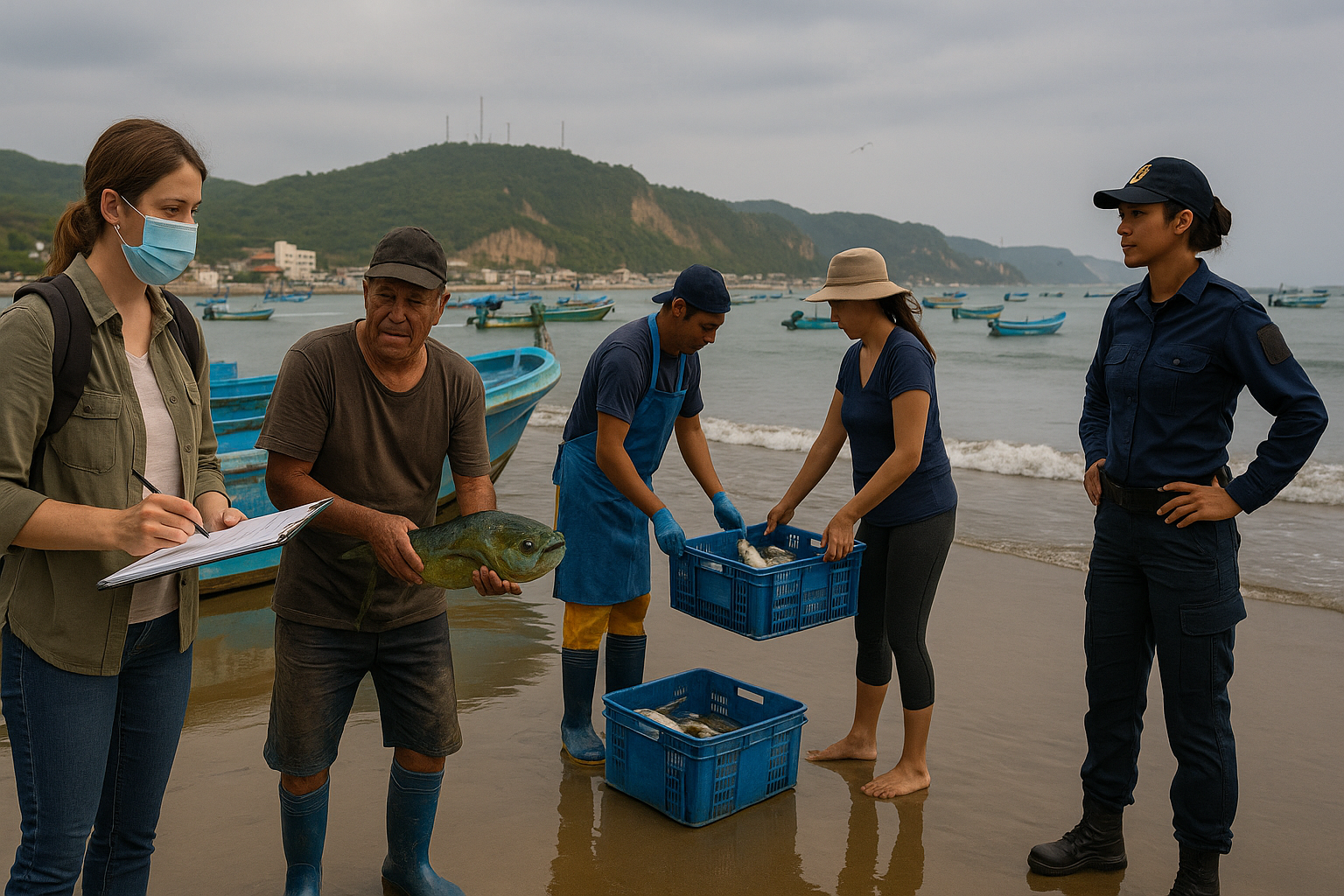Safeguarding Ecuador’s Seas: A Roadmap for a Sustainable and Inclusive Blue Economy
The World Bank-backed report outlines a strategic roadmap for Ecuador to achieve a sustainable blue economy by identifying priority marine areas for conservation and proposing inclusive, science-based management solutions. It emphasizes protecting biodiversity while supporting livelihoods through marine spatial planning, artisanal fisheries co-management, and mangrove restoration.

Ecuador’s Pacific coastline stretches more than 5,200 kilometers and encompasses a remarkable diversity of marine life, from lush mangrove estuaries to coral reefs and nutrient-rich upwelling zones. The region is home to 21 of the 27 globally recognized marine and coastal ecosystems, offering a rich array of biodiversity and critical services to local communities. But this treasure trove is under pressure. Over the past four decades, Ecuador has lost more than 823,000 hectares of coastal forest, while agriculture and shrimp farming have expanded by over 633,000 hectares. Industrial fishing, mass tourism, port infrastructure, and offshore oil exploration have added further strain, challenging the country’s ability to conserve its marine assets while promoting economic growth.
With only 19% of its coastal and marine area currently under protection, Ecuador is far from meeting its commitment to the Kunming-Montreal Global Biodiversity Framework’s “30 x 30” target, protecting 30% of its land and marine spaces by 2030. To bridge this gap, the World Bank, with funding from PROBLUE, has partnered with national institutions and research organizations to deliver a spatially grounded, science-based strategy that lays the foundations for a sustainable blue economy.
Mapping a Path to Marine Sustainability
At the heart of the report is a spatial prioritization analysis that systematically maps Ecuador’s coastal and marine regions based on the value and vulnerability of their ecosystem services. This rigorous process classified ecosystems like biodiversity conservation, artisanal fishing, aquaculture, tourism, and climate regulation. Data from Ecuador’s environment ministry, IUCN, MIGRAMAR, and global partners were layered to assess both ecological significance and human impact.
The spatial model assigned values to each area based on conservation compatibility. For instance, regions with coral reefs, mangroves, and critical habitats for marine mammals received high priority. In contrast, zones with intensive industrial fishing or shrimp aquaculture were rated lower. A weighted overlay then integrated all data into a comprehensive prioritization map. The result: a clear visual of low-, medium-, and high-priority conservation zones across Ecuador’s marine territory.
Three regions stood out as conservation hotspots: the Gulf of Guayaquil, Machalilla National Park, and the Cayapas-Mataje Ecological Reserve in North Esmeraldas. Together, these areas support biodiversity, local economies, and cultural heritage, but remain vulnerable and, in many cases, unprotected.
A Closer Look at Ecuador’s Marine Hotspots
The Gulf of Guayaquil, the largest estuary on South America’s Pacific coast, is a biodiversity powerhouse lined with mangroves that support crucial fisheries. Yet, it is increasingly threatened by the unchecked expansion of shrimp aquaculture. Provinces like Guayas and El Oro now account for over 80% of Ecuador’s shrimp farms. The report recommends co-management systems that actively involve artisanal fishers and the creation of marine ecological corridors to better safeguard sensitive habitats.
Machalilla National Park, home to Ecuador’s only continental coral reefs, faces mounting pressure from tourism. The park’s dual ecological and cultural significance makes it both a magnet for visitors and a zone in need of careful zoning and visitor management. Recommendations include defining exclusion zones, installing eco-friendly infrastructure, and continuous coral health monitoring.
In North Esmeraldas, the Cayapas-Mataje mangroves act as natural buffers against climate change impacts and are vital for the livelihoods of local communities. Yet they are under siege from agricultural expansion and deforestation. The report calls for enhanced community stewardship, restoration programs, and sustainable enterprises, particularly ecotourism and fishing cooperatives.
From Policy to Practice: A Blueprint for Action
The report doesn’t stop at diagnosis; it delivers a detailed action plan divided into short, medium, and long-term strategies. These include:
-
Co-managing artisanal fisheries in high-pressure areas like the Gulf of Guayaquil by improving stock data, involving communities in governance, and piloting no-take zones.
-
Tourism zoning in Machalilla National Park, where ecological carrying capacity assessments can inform infrastructure planning and visitor limits.
-
Mangrove restoration is aligned with economic development, including branding sustainable enterprises that promote local products and conservation benefits.
-
Marine spatial planning (MSP) reforms, including legal updates, data portals, and cross-sectoral working groups to guide integrated coastal management.
All these efforts emphasize inclusivity, respect for traditional knowledge, and science-based decision-making. The creation of data portals and centralized monitoring systems is also highlighted to enable better enforcement and adaptive governance.
Toward a Blue Economy That Works for All
The report ends with a call to unity and action. It urges Ecuador to forge a shared national vision for its marine spaces, one that unites public institutions, private actors, indigenous communities, and scientific organizations. Protecting marine biodiversity is no longer just an environmental goal; it is a prerequisite for food security, climate resilience, and equitable economic growth.
By investing in science, empowering communities, and embracing a forward-looking conservation ethic, Ecuador is poised to become a regional leader in ocean stewardship. If implemented effectively, the proposed measures could serve as a blueprint not just for Ecuador but for other coastal nations seeking to turn their marine wealth into lasting prosperity. The foundations have been laid. Now comes the challenge, and opportunity, of building upon them.
- FIRST PUBLISHED IN:
- Devdiscourse










